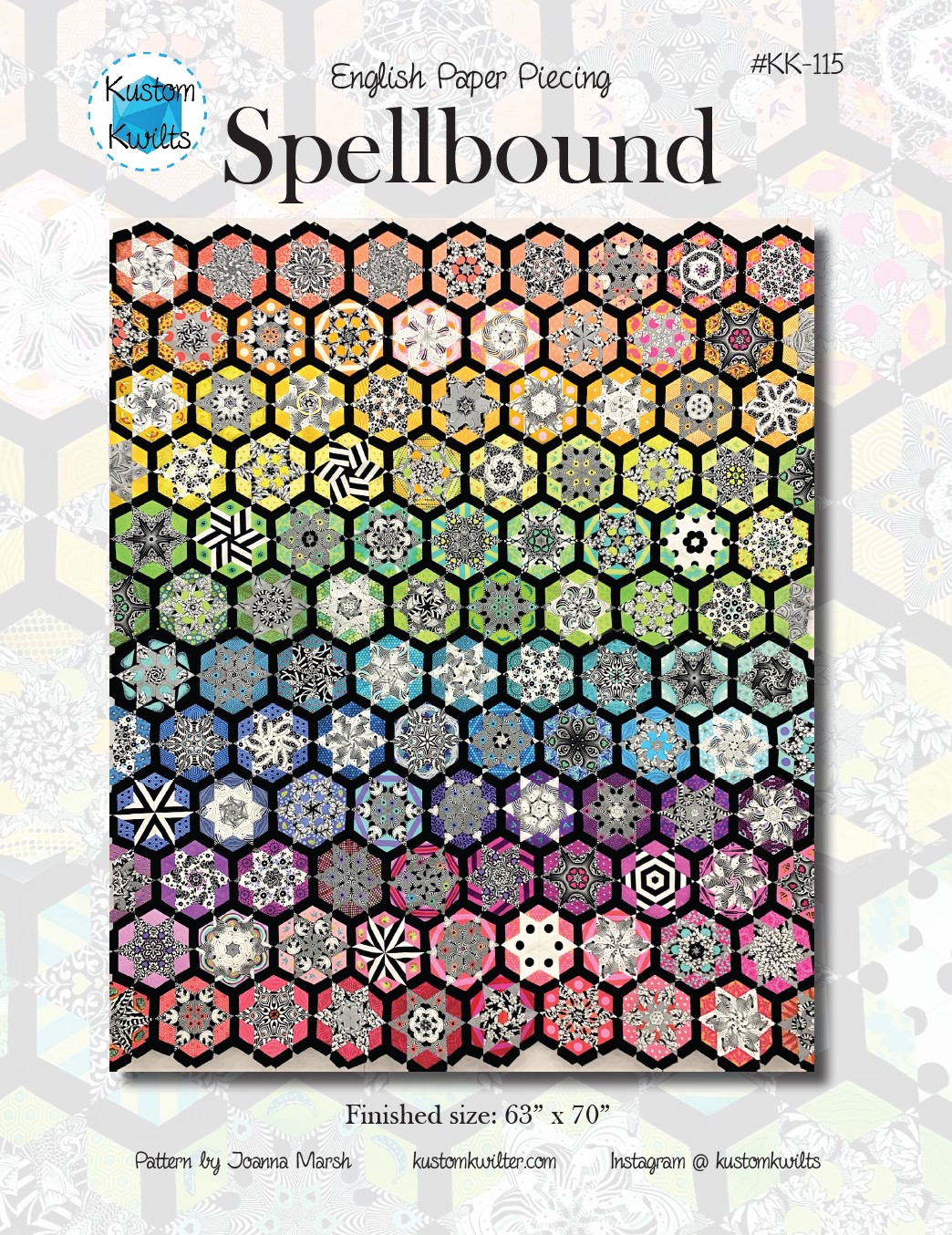
I’m so thrilled to finally have my Divination EPP quilt pattern out in the world! I am such a huge fan of 8-pointed stars that I knew I wanted my next pattern to be composed primarily of that shape. English paper piecing is such a wonderfully fun past time, and I really had so much fun picking fabrics and fussy cutting each of these blocks. This pattern looks deceptively intricate, but each fussy cut print is paired with a “blender” fabric that reads as a solid, so it simplifies the fabric selection quite a bit. It’s a great confident beginner project for those familiar with EPP, but not ready to pair complex fabrics together for each and every block.
I have been looking at my out of print fabric stash for quite a while now, and I LOVE using that fabric up. I want to use up every crumb and enjoy those fabrics in quilts and usable projects. The Divination EPP Quilt is a great way to use up those long hoarded fabrics without regret.
Many of these prints are so fun to fussy cut, especially with the help of Magic Mirrors to show you a preview of what the kaleidoscope effect will look like BEFORE you do the cutting! You can see each and every block I’ve cut for my Divination EPP Quilt by heading over to Instagram. You can search the hashtag #DivinationEPP to see the awesome blocks!



The Divination EPP pattern includes these features:
- Clear instructions and fabric requirements (calculated in solids, but also includes a supplement with an exact diagram with specific fabrics used in the cover quilt and requirements for those fabrics))
- Coloring page to help plan your quilt
- Yardage requirements that aren’t usually included in EPP patterns
- Step-by-Step instructions with pictures to guide you through
- Instructions and diagrams for piecing quilt backs
- Pattern includes printable templates for easy cutting
- The option to purchase acrylic templates, making fussy cutting a breeze
- Basting diagram so your seams spin and nest perfectly
- Printable fussy cutting templates (this is especially useful if you are overseas and want to avoid shipping acrylic templates)
- Fussy cutting diagram to illustrate exactly how to cut the Tiny Stripes prints
- Fussy cutting diagram to illustrate exactly how to cut the striped stars, along with alternative layout
- Options to make THREE different sizes
- Expanded size assembly layouts for the 61″ x 82″ and 82″ square larger quilt options
- Printable papers
Fabric Kits
You can purchase a stripe bundle that will get you going on all of those smaller starbursts here. And you can get Ultimate Tula Pink Rainbow bundles here to coordinate with each fussy cut star in the top.


Fussy Cutting? What’s that?

Fussy cutting is one of my favorite things to do. And the Divination EPP pattern is made for fussy cutting! You basically take a fabric and look at the print on it. You decide what part of the print you want to show in your piecing and determine where your seam allowance will fall. A great way to look at this is with a set of Magic Mirrors to show how the pattern will repeat if you cut so many of the same print. I like to place the Magic Mirrors directly on top of the seam line of my fussy cutting template (that way, the angle is perfect) and move them on top of the fabric to see the different possibilities for fussy cutting.

Once you decide on the area of the print that you like, you use the acrylic templates to fussy cut the print so it creates a new and unique repeat. Half the fun is turning the pieces in opposite directions to see how much of a difference you can get from one print! Below are some great samples of fussy cutting turned into Divination EPP blocks.






New to English Paper Piecing?
That’s okay too. I’ve got you covered with a basic EPP video where I tell you about all my favorite tools, tips, and tricks for getting started with EPP. I’ve also got one on my favorite basting method I’m team glue basting all the way. There are tons of different supplies, methods, etc. and every single EPP-er seems to have some pretty strong opinions about which method and what supplies they prefer. English paper piecing is a fun way to take a project with you, and I invite you to explore the different methods and find the one that you like the best!
My favorite English Paper Piecing Accessories
- Precision glue tip to transform regular glue sticks into fine line applicators
- Richard Hemming & Sons Milliners Needles (sizes 10 & 11)
- Thimble It Stickers
- Poke A Dot Sticker thimbles
- A Precision Art Knife from OLFA to prevent cutting too much fabric when fussy cutting
- These cute travel snips
- The dreaded seam ripper but if you have to have one, this one is the best!
- Gutermann thread for piecing. Everyone has their own thread fav. for EPP. This one is mine.




































